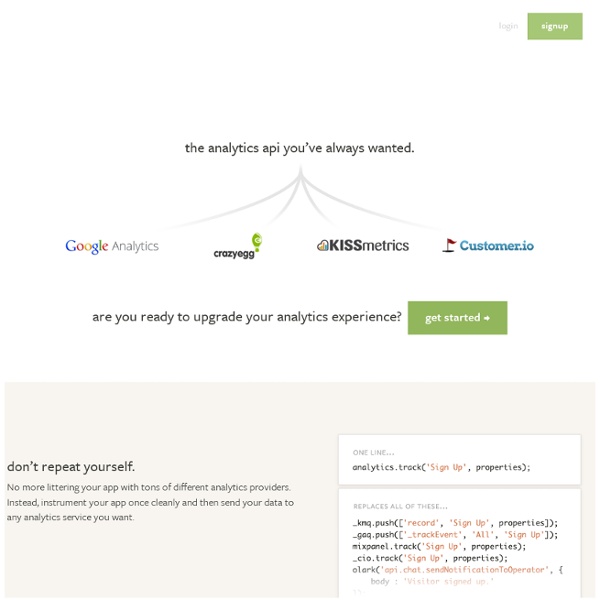



GoodData | Experience SaaS Business Intelligence CircuitHub Crea tu propia app móvil online. Prueba GRATIS durante 15 días, sin necesidad de programación. - Upplication Ecommerce Software, Shopping Cart & Online Store Solution - Shopio #38 – How to pitch an idea By Scott Berkun, February 2005 Coming up with good ideas is hard enough, but convincing others to do something with them is even harder. In many fields the task of bringing an idea to someone with the power to do something with it is called a pitch: software feature ideas, implementation strategies, movie screenplays, organizational changes, and business plans, are all pitched from one person to another. And although the fields or industries may differ, the basic skill of pitching ideas is largely the same. This essay provides a primer on idea pitches, and although most of my experience is in the tech-sector, I pitch to you that the advice here will be relevant to pitching business plans, yourself (e.g. job interviews), screenplays, or anything else. The nature of ideas Ideas demand change. Healthy and progressive organizations make change easier than stinky evil organizations do. Step 0: Create and refine the idea Good ideas include some thinking about execution and delivery. References
The Most Important Ecommerce Marketing Metric You're Not Tracking How's business? Good? How can you tell? Intuitively, humans use ratios determine value. Unit Economics People use the term "ROI" or "Return On Investment" very loosely. Unit economics might sound fancy, but it's a really simple concept. I kept putting "units" in quotation marks because what you look at as your unit of economic value can significantly change how you approach growing your business. Transactional Unit Economics I remember someone once described selling through marketplaces, like Amazon.com, as the most addictive experience in the world. Transactional unit economics are expressed using a simple ratio: Cost Of Transaction Acquisition (COTA) : Average Order Value (AOV) This can be read as: "For every dollar I put in to acquiring a transaction, I get $X back." For the sake of whole numbers, there's nothing wrong with flipping that ratio around and using AOV:COTA which, from our example, would give you a nice round ratio of 2:1 (which you can reduce to a nice, clean "2").
Kyberia mapping project The goal of this project is creating a graphical representation of Kyberia.sk node tree. This is the the basic structure of Kyberia universe - it looks like universe, doesn't it? In the center, there is a node number 101, which is a root of all nodes. If you follow parent of any node long enough, you'll eventually get to node number 101 (except for anomalies that will leed to an infinite cycle:). The nodes in lighter colors have more good Karma (called K!). Orientation in this universe is pretty complex. The second picture shows pretty large forum with a lot of branches. There are dark corners on the internet :) It would be a pity if I did not show probably the most visited node category -- "Sex and more...". The second row shows a different view, on the right you can see the sinful images forum. The last row shows "the sexiest gals (of kyberia)" forum. Some structures look like fractals (no node connections shown here).
Backplane 13 energy data startups to watch in 2013 Dozens of startups building analytics that can collect and analyze energy data emerged or grew their businesses in 2012. It was a hot trend for a variety of reasons including the development of big data technologies as a massive and growing business, the notion that energy analytics are a more attractive capital-lite business than smart grid hardware, and the reality that utilities need to digitize their power grids to provide better service in the modern age. Here’s a list of 13 startups that we covered last year that I would keep an eye on in 2013. A couple of these, like Opower and Nest, I also included on my list last year: 1). Stem: Formerly called Powergetics and founded in 2009, Stem ‘s software tracks and analyzes energy use in buildings and helps companies predict and control their energy budgets. 2). Honeywell & Opower’s iPad smart thermostat app 3). 4). 5). 6). 7). 8). 9). 10). 11). 12). 13).